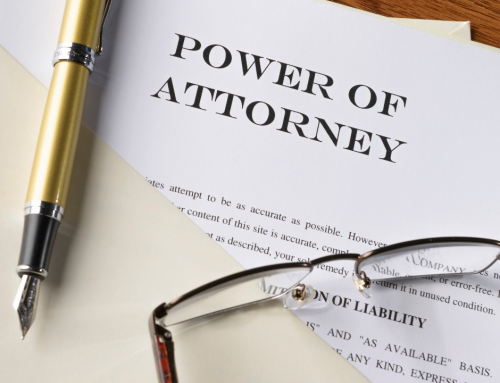Making a Power of Attorney (PoA) is a vital step that ensures your wishes are respected and your affairs are managed effectively, should you become unable to do so yourself during your lifetime. This blog walks you through the process in a clear, concise manner.

Step 1: Understanding Power of Attorney
Before delving into the process, it’s crucial to understand what a Power of Attorney is. In essence, it is a legal document that grants one person or more (the “attorney”) the authority to make decisions on behalf of another (the “donor”) should they be unable to do so themselves. There are various types of PoA, including Lasting Power of Attorney (LPA) for property and financial decisions and health and welfare decisions in England and Wales, with equivalents in Scotland and Northern Ireland.
Step 2: Deciding the Type of PoA
The first step is deciding which type of PoA is right for you. If you’re looking to cover decisions about your financial affairs, a Property and Financial Affairs LPA is suitable. Conversely, if you wish to grant someone the authority to make decisions about your health and welfare, a Health and Welfare LPA is necessary. Some may choose to make both types for comprehensive coverage. Attorneys in a Property and Financial Affairs LPA cannot deal with Health and Welfare matters and the same applies in reverse. However, you can have the same attorneys in both types of LPA.
Step 3: Choosing Your Attorney(s)
Choosing who will act as your attorney is a decision that requires careful consideration. This person should be someone you trust implicitly, as they will be making decisions about your finances, property, health, and welfare. You can appoint more than one attorney and specify whether they can act independently (called jointly & severally) or they must make decisions jointly.
Step 4: Completing the Paperwork
Once you’ve decided on the type of PoA and who will be your attorney(s), the next step involves completing the relevant forms. This is a service offered by The Will Centre. It is paramount that these forms are completed accurately to avoid any issues later on; any mistakes will delay the completion of the process and many incur additional costs. This is a stage where seeking professional advice can be invaluable, ensuring all legal requirements are met and your documents are error-free.
Step 5: Registering Your PoA
In the UK, before a PoA can be used, it must be registered with the relevant body – in England and Wales, this is the Office of the Public Guardian (OPG). There is a fee associated with registration, and the process can take several weeks (12 weeks is the guideline, but at the date of this post it is taking around 20 weeks)! It is only after registration that the PoA becomes effective, so the earlier you make one the better!
Step 6: Storing Your PoA Safely
Once registered, your PoA document is a powerful legal tool. It’s important to store it safely and inform your attorney(s) and close family members of its location. Should the time come when it needs to be enacted, they will know where to find it. The Will Centre offers a Storage facility.
The Importance of Professional Advice
While it’s possible to navigate the process of enacting a Power of Attorney on your own, the importance of professional advice cannot be overstated. Expert guidance ensures that your PoA is correctly set up, reflects your wishes accurately, and adheres to all legal standards. At The Will Centre, we specialise in providing comprehensive, tailored advice on all aspects of PoA and estate planning. We’re here to support you at every step, ensuring your peace of mind and the well-being of your affairs.
Making a Power of Attorney is a significant step towards securing your future and that of your loved ones. By following this step-by-step guide and seeking the right professional advice, you can ensure that your wishes are respected, come what may. Remember, planning today can make all the difference tomorrow.






